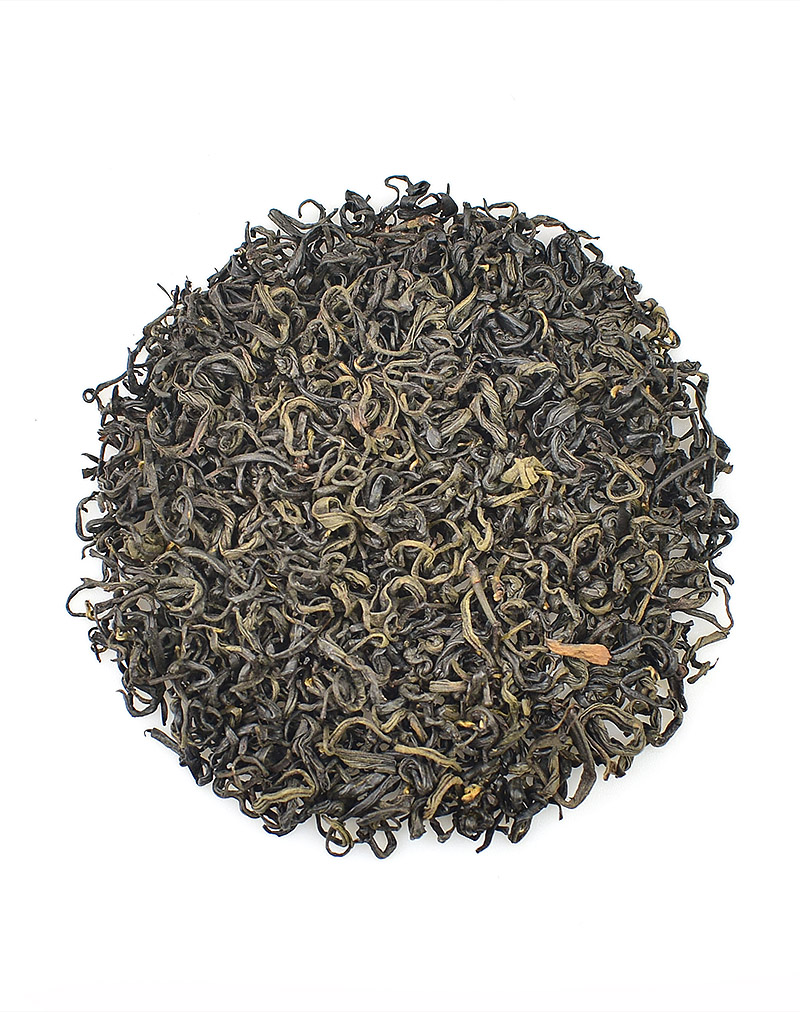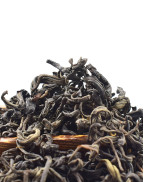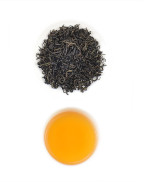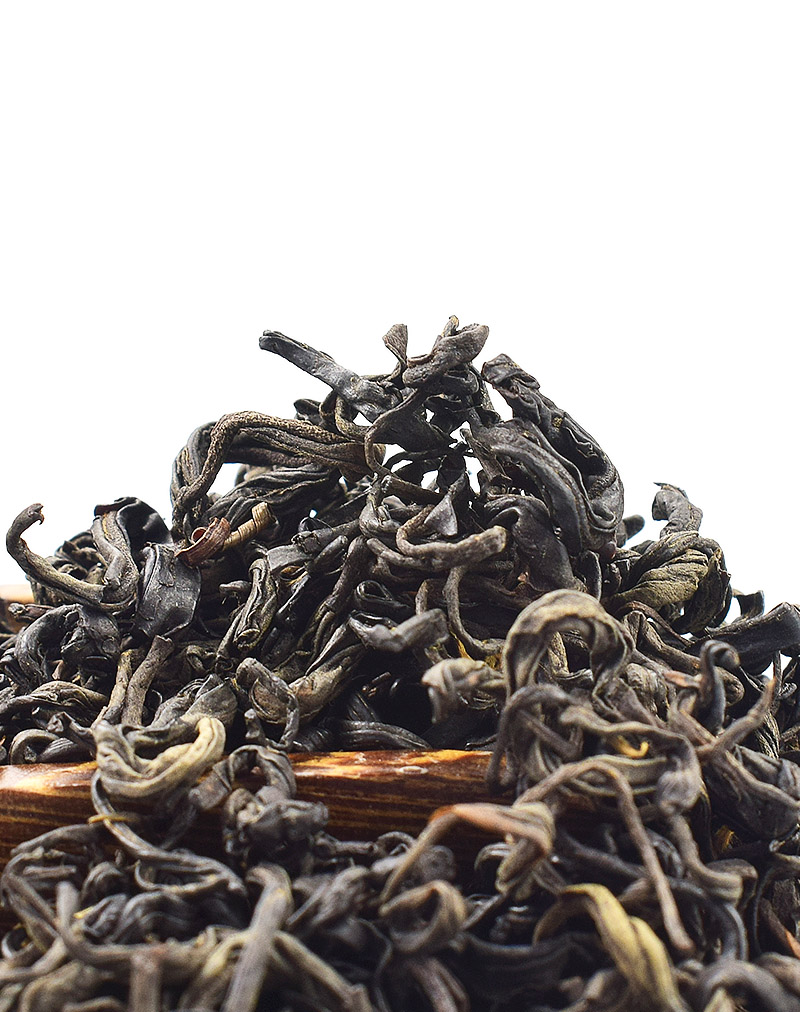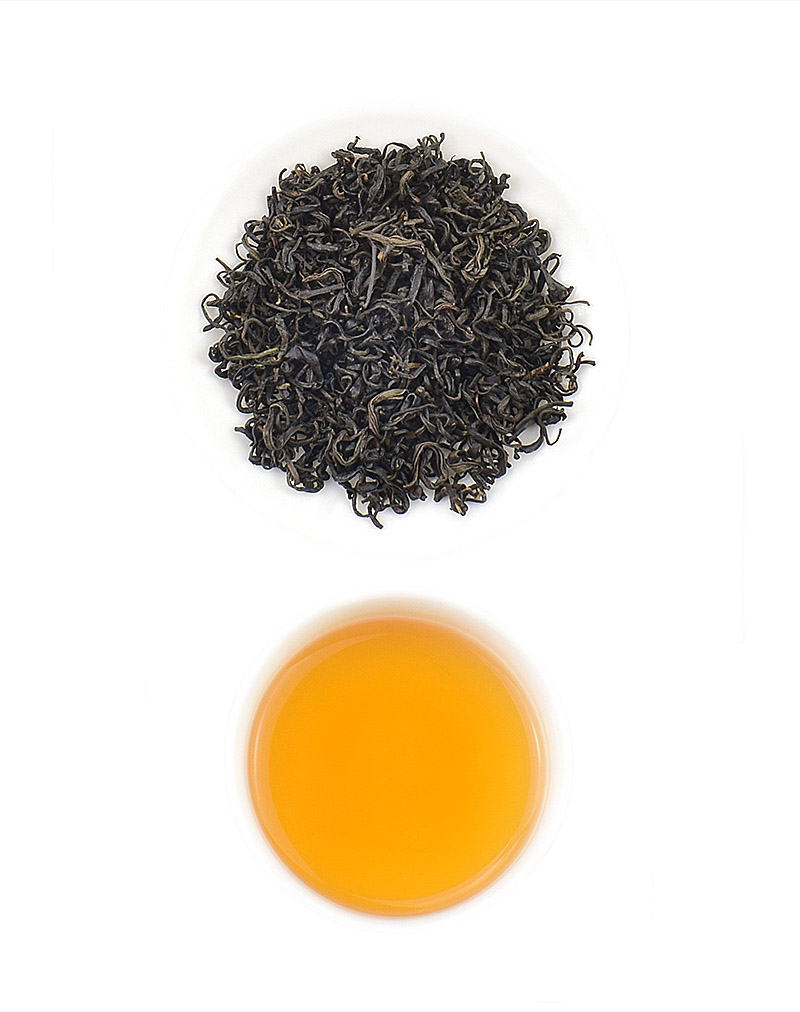Keemun Aromatic Snail Black Tea
- Product Code: simple
- Availability: In Stock
Basic Info
Name: Keemun Aromatic Snail Black Tea
Other names: Hong Xiang Luo Keemun Tea, Qimen Xiang Luo
Origin: Qimen County, Anhui Province
Taste & Aroma: Mineral flavour, tangy fruity, lightly sweet, smooth, fruity with a hint of floral note
Liquor: Bright and clear liquor,crimson
Dry Leaf: Coiled leaves, snail shapes
Harvest Period: Spring 2024
Harvest Date: 26 April, 2024
Fermentation: Complete
Item Form: Loose leaves
Ingredients: Hand-picked natural tea buds and leaves
Tea maker: Wang Xiaoli
Tea bush: Zhu Ye Zhong (槠叶种)
Storage: Stored in cool, airtight, opaque containers
Shelf Life: 18months at room temperature / 24 months with low temperature storage
Flavor: Unflavored
Caffeine: Normal
Keemun Aromatic Snail Black Tea
This is an ordinary Keemun Aromatic Snail Black Tea, but the taste is unforgettable. Although its grade is not as high as that of another Keemun Aromatic Snail Black Tea on our website, its price is lower. If you want to try the taste of Keemun black tea, this entry-level tea is very worth choosing.
This Keemun Aromatic Snail Tea comes from Keemun County, in Huangshang City, Anhui Province. The maker is Wang Xiaoli whose family has been making Keemun black tea since his grandfather's generation. I met them through a a local tea retailer I became a fan of his tea after having tried his Keemun samples sent to me.
Keemun tea
Keemun tea (Qi Men Hong Cha in Chinese) short for Qihong, is a famous tea in Chinese history. The name of the tea is an older (colonial) western spelling name, and its place of origin is Qimen County (pronounced "Chee-men"). It was created by tea farmers in Anhui Province during the reign of Guangxu (1871 - 1908). Keemun Black Tea is one of the best and most popular black teas in China. Keemun Tea is produced in the Qimen County, southern Anhui Province, and is a famous tea producing area in China. Other producing areas of Keemun tea include Dongzhi, Guichi (today's Chizhou City), Shitai, Yi County in Anhui Province, and Fuliang in Jiangxi Province. Compared to other black teas, Keemun Black Tea has a short history. It was created in 1875, and has a history of more than 100 years.
Anhui Province
Anhui Province is a renowned tea-producing region in China. Its unique geographic location provides an ideal environment for growing tea. The province is located in the eastern part of China, which has a humid subtropical climate and abundant rainfall, making it an excellent place for tea cultivation.
Anhui Province has a long history of tea production and a rich tea culture. The province has been producing tea for over 1,500 years, and the local tea farmers have developed unique techniques for growing and processing tea, resulting in a range of high-quality teas that are well-regarded both domestically and internationally.
There are a diverse range of tea varieties in Anhui, each with its own distinctive flavor and aroma. From the floral and fruity Keemun black tea to the nutty and sweet Lu'an Guapian green tea, Anhui produces a wide variety of teas to suit different tastes.
Anhui's tea industry is supported by a strong infrastructure of tea gardens, tea factories, and tea research institutions, which have helped to maintain the quality and reputation of Anhui's teas. All these factors contribute to Anhui's status as one of the most important tea-producing regions in China, and indeed the world.
Here are some of the most famous Anhui teas:Huang Shan Mao Feng Green Tea, Keemun Black Tea, Tai Ping Hou Kui Green Tea, Lu An Gua Pian (Melon Seed) Green Tea ,etc. Each of these teas has a unique flavor and aroma that is beloved by tea enthusiasts around the world.
In fact, black tea in a rather rare category in the Ahnui teas .It's said that Keemun tea was first made in 1875 by Yu Ganchen, a failed civil servant while traveling to Fujian on a mission to learn how to make black tea as the Anhui province up to that point only produced green tea. Soon after, this tea became one of the most popular black teas throughout the world.
These good natural conditions are very suitable for the growth of Keemun tea trees. Castanopsis carlesii, the main local tea cultivar, is rich in content and has high enzyme activity, which is very suitable for the production of gool black teas. The lack of sunlight increases the chlorophyll content in the fresh tea leaves.Chlorophyll has a great influence on the flavor of tea soup.It can not only make tea have a fruity, naturally sweet, fruity palate and a distinct floral (orchid-like) fragrance but make the tea take on a clear, brilliant red color when brewed.
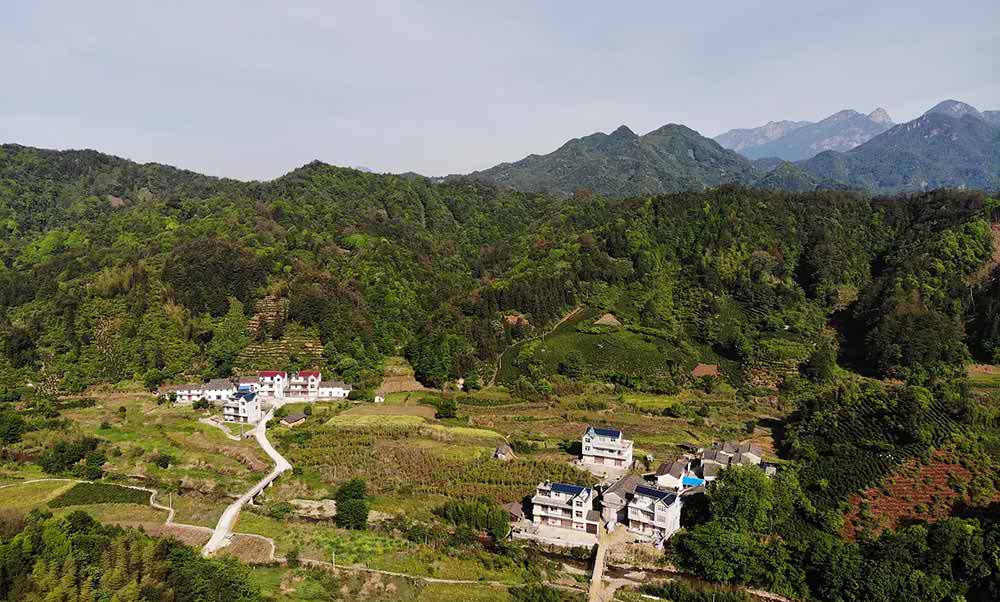
A Small Village Where Qimen Black Tea Is Grown
Show Full Description
The core areas of growing Keemun black tea are all mountainous and covered with forests and characterized by low temperatures, high humidity, frequent fog and fertile soil.
These good natural conditions are very suitable for the growth of Keemun tea trees. Castanopsis carlesii, the main local tea cultivar, is rich in content and has high enzyme activity, which is very suitable for the production of gool black teas. The lack of sunlight increases the chlorophyll content in the fresh tea leaves.Chlorophyll has a great influence on the flavor of tea soup.It can not only make tea have a fruity, naturally sweet, fruity palate and a distinct floral (orchid-like) fragrance but make the tea take on a clear, brilliant red color when brewed.
Keemun (Qimen) County
Keemun (Qimen) County is located in the southern part of Anhui Province, between latitude 29°35 '-30 °08' N and longitude 117°12 '-117 °57' E. It is 74.8 kilometers long from north to south, 59.9 kilometers wide from east to west, and covers a total area of 2,257 square kilometers. Influenced by the North subtropical humid monsoon climate, the mild climate, abundant rainfall and cloudy weather make Keemun very conducive to the growth of high quality Keemun black tea.
The production of Qimen black tea can be roughly divided into three stages.
1.Picking/plucking. Fresh tea picked that day needs to be processed that day.When picking Keemun black tea, the picking standards should be strictly observed.Generally speaking, high grade tea needs to be made from one bud and one leaf or one bud and two leaves. Depending on the growth condition of the tea plant, the picking activity can continue for 6-7 rounds in spring and up to 6 times in summer.In most cases, the picking activity is not carried out in autumn and winter.
2.Primary processing: It includes Withering, Rolling, Oxidation, Drying.This process turns the buds and leaves from green to coppery red, the leaf body into a strip and promote the synthesis of flavor chemicals.Fermentation is a unique stage of black tea production, which is the key to determine the quality of Keemun black tea. The fermentation temperature is below 30 degrees. After fermentation, the leaves turn red, forming the quality characteristics of red leaves and red soup of Keemun black tea. The black tea made through this process has a special name of "Hong Mao tea",which means black tea without screening and further processing.
3.Sorting / Refining. Tea sorting process or refining process is complicated and takes a lot of time. It includes more than ten steps. This process is important and necessary to improve the quality of final tea.Because it takes a lot of time, the tea processed through this step is also called "Gongfu" tea."Gongfu" means a lot of labor and time in Chinese.This step can make the tea cleaner and more attractive, and also improve the taste and aroma of the tea.
Characteristics
Depending on tea variety, quality and the way how you brew it, Keemun black teas may present different flavor and liquor color. Overall, Keemun black tea is lightly sweet, smooth, fruity with a hint of floral note with minor variations in liquor color, sweetness, and aroma. Color of tea liquor may range from intense orange to amber and red.
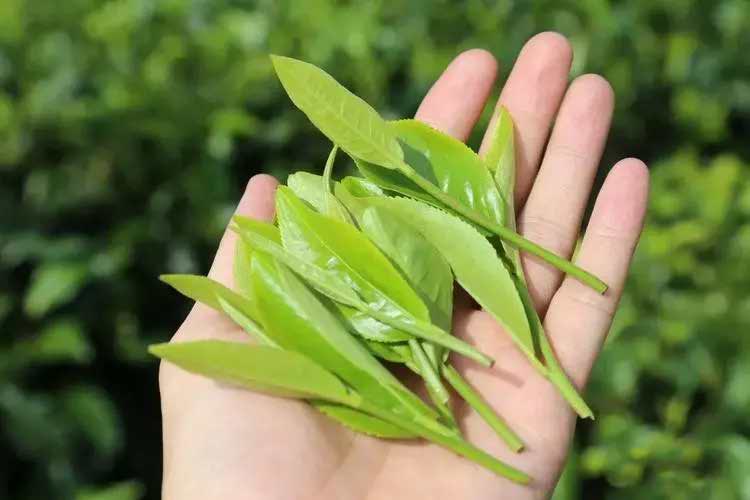
Fresh Leaves Of Zhu Ye Zhong Cultivar
the Ace of the three rich-aroma black tea of the world
Known as the "Queen of Black Tea", Keemun Black tea won the Gold medal at the Panama World's Fair in 1915 for its high quality and special aroma, called "Keemun fragrance祁门香".
The "Keemun fragrance" refers to the unique fragrance of Keemun black tea, which is related to the chemical components of geraniol, benzyl alcohol and 2-phenylethanol contained in the tea leaves, which have floral, fruity, orchid-like, and honey-like fragrance. The aroma of Keemun tea has a great relationship with the unique growing environment of Qimen, Anhui Province.
Unlike Indian Assam tea, Keemun black tea is made from Camellia sinesis var. sinensis, mostly planted in China and is popular for producing green tea. This is why Keemun black tea is more mellow and has a lower caffeine content than Assam and Ceylon black tea. Keemun tea is often added to English breakfast or Russian Caravan blends, to achieve the specific profile and to soften the flavor of Assam tea.
In addition to the traditional Keemun Black Tea made by the traditional process, there are several Keemun Black Teas made by the new processing techniques on the market. Keemun Golden Needles Black Tea (Qi Hong Jin Zhen) belongs to the new-process Keemun black tea, the others are Keemun (Qi Men) Hong Mao Feng Black Tea, Keemun Xiang Luo Black Tea (Qi Hong Xiang Luo) and so on. In fact, Keemun Golden Needles Black Tea (Qi Hong Jin Zhen) is not very different from Keemun Xiang Luo Black Tea (Qi Hong Xiang Luo) in the production process.The main difference is hidden in the shaping step. The former is curled into a snail shape, while Keemun Golden Needles Black Tea (Qi Hong Jin Zhen) is somewhat similar to Huang Shan Mao Feng, and the the processed leaf is tight and straight. Of course, the two are also different in other aspects such as evenness and rolling degree.
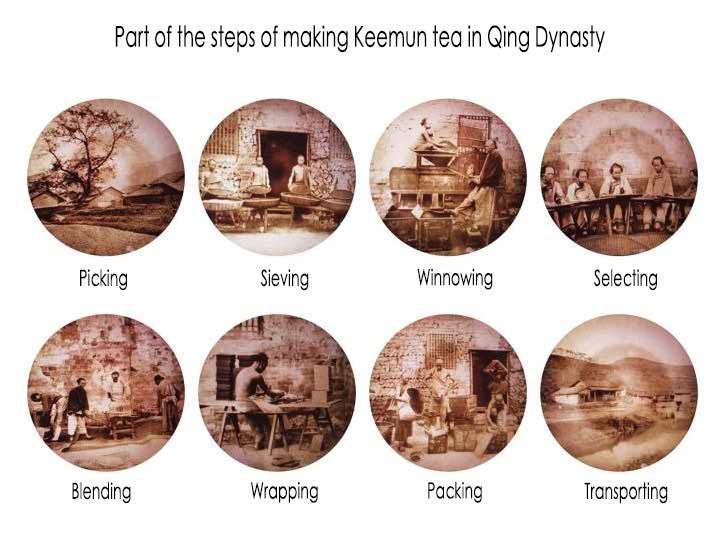
Keemun Aromatic Black Snail Tea
Invented in 1996-1997, Keemun Aromatic Snail Black Tea is a top grade type of Keemun black. Its name refers to the appearance of the dry leaf that resembles the shape of a small snail shell. The traditional Keemun black tea Keemun Gongfu (kung fu) black tea has a cutting process in production in which tea is cut into 0.6-0.8 cm small particles. It is said that the tea maker who invented this tea got inspiration from the shape of the famous green tea Bi Luo Chun Green tea. Why not try to make the shape of Qimen black tea similar to Bi Luo Chun? After many attempts, a new Keemun black tea was finally born. Aromatic Snail tea is made of whole early spring young leaves and tender buds and has a distinctive coiled leaf appearance shaped into snail shapes, also featuring a distinctive and charming Keemun fragrance (祁門香).
This tea and Keemun Golden Needles Black Tea both come from Qimen County, and although they are both newer types of Keemun black tea, their processing techniques are different, so their appearance and taste is slightly different.

Picking Kemmun Black Tea In High Mountain
The flavor of Keemun Aromatic Black Snail Tea is relatively thicker due to its second fermentation step. The coiled leaves produce a bright liquor reddish-brown cup with a full-bodied, light, woody and tangy flavour and lightly creamy, sweet honey taste with a lingering, mellow long-lasting aftertaste. If you prefer a richer taste profile than Gongfu Keemun tea and want to appreciate the beautiful visual appearance of this new-born Keemun tea with a sweeter and mellower note, consider drinking this tea.
This is a kind of mellow tea, which will be drunk alone or with sugar and/or milk. For iced tea, follow the ratio of 1g tea: 50ml water, and let it stay in the refrigerator for at least 1 hour before serving.
| Chinese Gongfu Method | |
| Tea | 5g |
| Water | Gaiwan 3oz / 85ml |
| Time | 6 infusions: (rinse,15s,25s,30s,40s,60s,70s) |
| Temperature | 90ºC |
| Teapot Method | |
| Tea | 7g |
| Water | Teapot (8oz / 240ml) |
| Time | 1 - 4 mins |
| Temperature | 90ºC |


